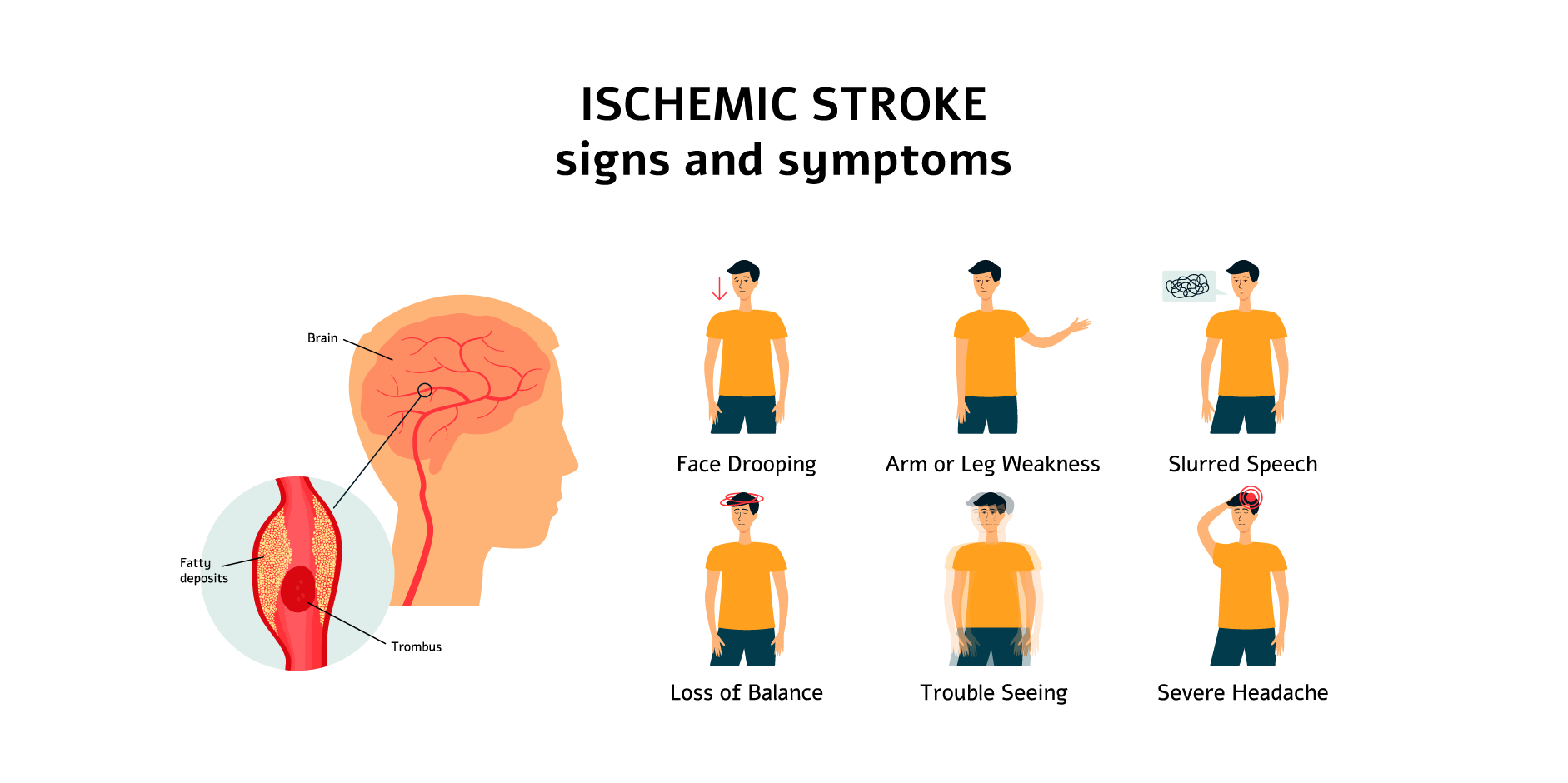Content on this page:
Content on this page:
Clinical Presentation
An early and accurate diagnosis is essential in acute stroke management
to confirm the presence of stroke, identify stroke mimics or other conditions
requiring urgent care and determine the etiology for targeted interventions.
 Ischemic Stroke_Initial Assesment
Ischemic Stroke_Initial AssesmentCommon Presentation of Patients with Acute Ischemic Stroke by Region
Left (Dominant) Hemisphere
The common presentations of a patient with an acute stroke in the left hemisphere include left gaze preference, right visual field deficit, right hemiparesis, right hemisensory loss, dysarthria, aphasia (Broca’s, Wernicke’s, Global), apraxia and visual agnosia.
Right (Non-dominant) Hemisphere
The common presentations of a patient with an acute stroke in the right hemisphere are right gaze preference, left visual field deficit, left hemiparesis, left hemisensory loss (hemispatial inattention), neglect of left side and dysarthria.
Brainstem
The common presentations of a patient with an acute stroke in the brainstem are nausea/vomiting, diplopia, dysconjugate gaze, gaze palsy, nystagmus, dysarthria, dysphagia, vertigo, syncope, hemiparesis or quadriplegia, sensory loss in the hemibody or on all four limbs, decreased consciousness, hiccups, abnormal respirations, and alexia or inability to understand words written.
Cerebellum
The common presentations of patients with an acute stroke in the cerebellum are truncal/gait ataxia, limb ataxia, dysarthria, vertigo and nystagmus.
History
The time of symptom onset is the single most important piece of historical information in the diagnosis of stroke. Stroke onset is defined as the last time the patient was symptom-free. Determine the symptom evolution and associated features that may point to alternative diagnoses (eg seizure, migraine, infection, trauma). Identify the risk factors for arteriosclerosis and cardiovascular (CV) disease; medications and conditions that may predispose to bleeding complications; and history of drug abuse, infection, migraine, seizure, trauma, oral contraceptive use, or pregnancy.
Physical Examination
A complete physical examination, including vital signs, oxygen saturation and body temperature, should be done. A focused neurologic exam is critical to rapidly assess deficits.
Diagnosis or Diagnostic Criteria
Clinical Stroke Score
The National Institutes of Health Stroke Scale (NIHSS) helps quantify
the degree or severity of neurological deficit and may identify the possible
location of the lesion/occlusion. This facilitates communication between
healthcare professionals and may provide prognostic information. This may
identify patients eligible for interventions and potential risk for
complications. The Rapid Arterial Occlusion Evaluation Scale (RACE) or the Los
Angeles Motor Scale (LAMS) may be used to identify suspected stroke patients with
increased likelihood of large vessel occlusion who are candidates for endovascular
thrombectomy.
